Caddle Answers: How to upload a receipt to the Caddle website
Did you know that you can upload your receipts to claim offers on our websites as well?
Here is how you do it!
Step 1:
Go to getcaddle.com/consumers/ and sign in to your Caddle account.

Step 2:
After you’ve signed in, find the “Upload Receipt” tab on the top and click on it.
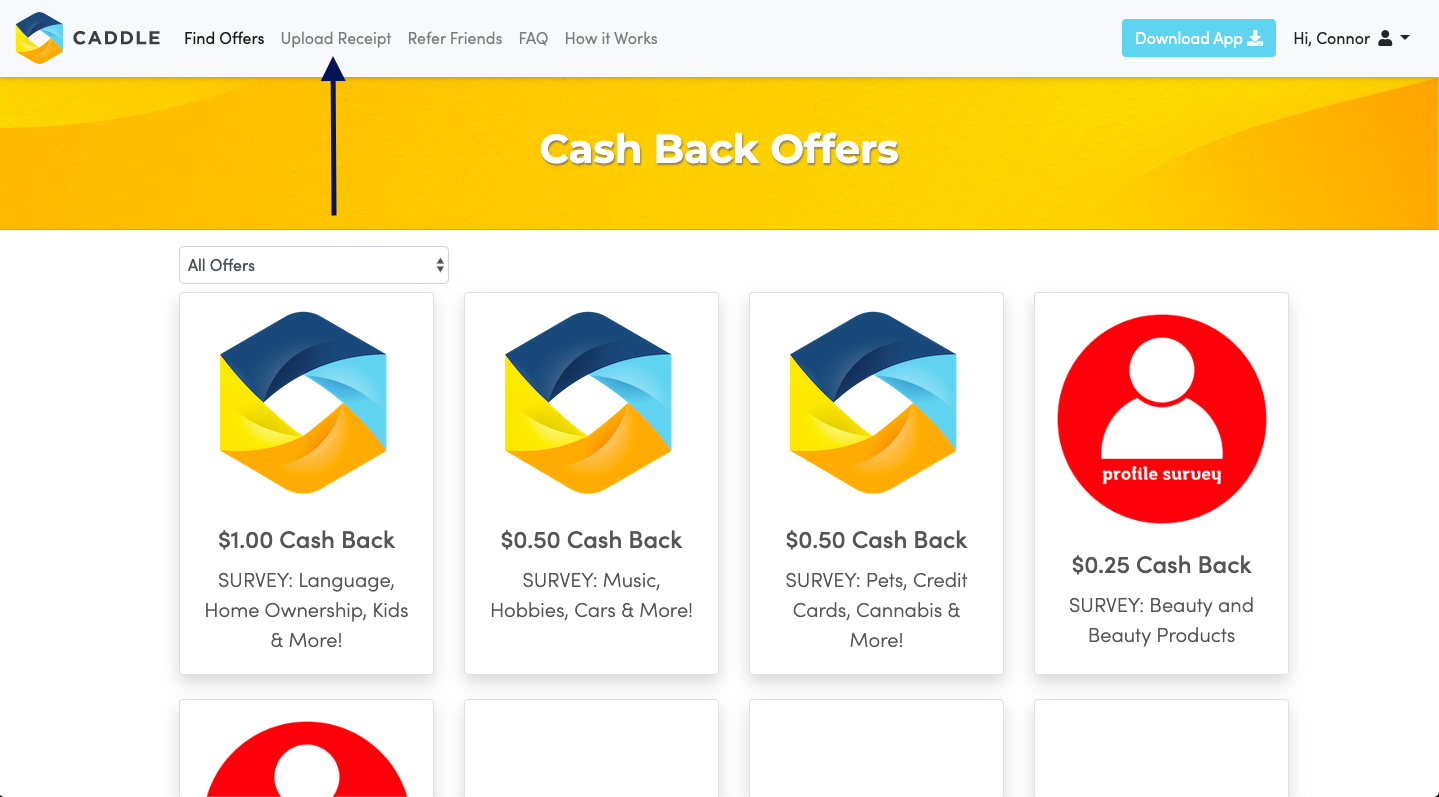
Step 3:
Upload your receipt images and select the appropriate offer. This page tells you exactly how to do it in two easy steps!
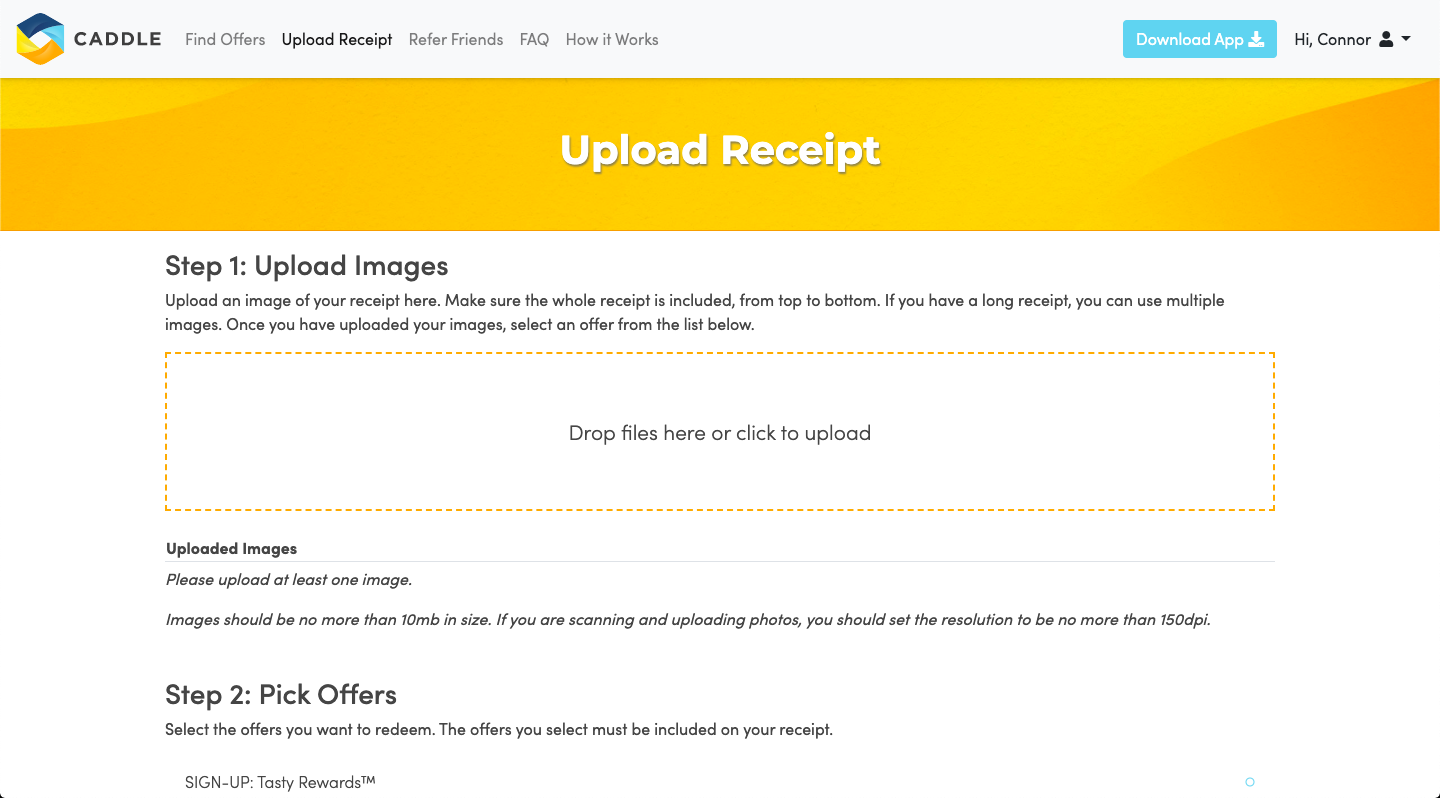
Got more questions about how we run things at Caddle?
Great! We love answering your questions. To look for more answers to other questions, you can refer to our FAQ page or take a look through this blog page for more in-depth explanations on how we roll here at Caddle.
Still can’t find what you’re looking for? You can contact us and we’ll get back to you with the answer!
Caddle Answers: How to take the best picture for receipt approval
Have you been scoring some sweet offers on our platform and are ready to upload your receipt to our app to earn cashback? There are three ways to take pictures for upload, this is how you do it for each option.
First off, make sure you’re taking pictures in a well-lit area and that your receipt is as smooth as possible. Free from folds, creases and wrinkles as much as possible.
Note – It is important that you upload a picture of the whole receipt so we are able to validate your offer.
iOS Users – Make sure that Live Photos is turned OFF. Not sure what that is or how to do that? Read all about it here
In-App Camera (Automatic mode): In Automatic mode, our camera is automatically detecting a receipt image. When you want to use the automatic mode, our suggestion is to move slowly and with purpose. Set your receipt up against a dark background in a well-lit area. Hold the phone above the receipt and wait for the camera to highlight the full receipt (on Android devices, it outlines the receipt in white, and on Apple devices it highlights the full receipt in blue). If the highlighted area selects the full receipt, you’re all set! If not, simply select ‘retake’ until you see a clear photo of the full receipt.
In-App Camera (Manual mode): In manual mode, you are able to make sure that your receipt is scaled properly before you take the picture. If your receipt doesn’t fit in all one picture, you can take several pictures of the receipt and upload it to our platform.
Device Camera: You are also able to upload pictures of your receipt that you’ve previously taken on your phone. This option is ideal because once you’ve taken the picture, it stays on your phone until you delete it. This is great in the event you’ve lost or thrown out the original receipt!
Got more questions about how we run things at Caddle?
Great! We love answering your questions. To look for more answers to other questions, you can refer to our FAQ page or take a look through this blog page for more in-depth explanations on how we roll here at Caddle.
Still can’t find what you’re looking for? You can contact us and we’ll get back to you with the answer!
Caddle Answers: What is a Live Photo (iOS)?
Live Photos are a new feature on iPhone devices. These photos are a 3-second moving image that allows you to select the best picture.
While great for selecting the best picture, this feature isn’t so great for uploading pictures of receipts to Caddle.
Since live photos are technically a 3-second video, if you upload your receipt to Caddle as a Live Photo, the image format will be incorrect and we won’t be able to review your receipt.
To turn Live Photo off, tap this icon:
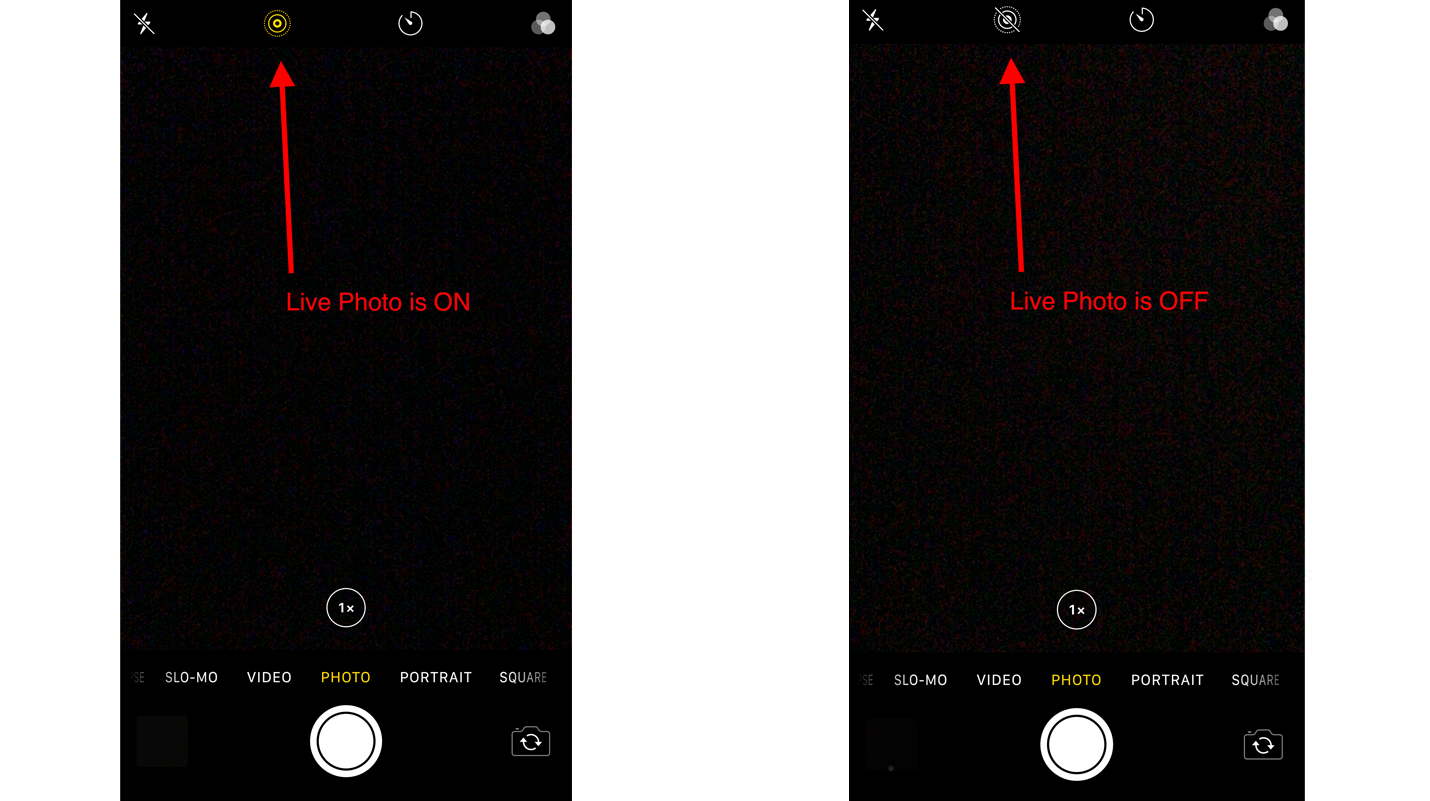
With Live Photo off you can upload pictures of receipts to Caddle with ease!
Got more questions about how we run things at Caddle?
Great! We love answering your questions. To look for more answers to other questions, you can refer to our FAQ page or take a look through this blog page for more in-depth explanations on how we roll here at Caddle.
Still can’t find what you’re looking for? You can contact us and we’ll get back to you with the answer!
Caddle Answers: How long do I have to wait for approval?
Haven’t heard from us in a while and are beginning to wonder when your uploaded offer will be approved? Here is a quick guide on how long our approval process takes!
How long does it take to process receipts?
The quick answer: 72 hours. But there are many factors that can raise or lower the expected approval process. Here are the most common reasons that receipt approval may be delayed.
- Volume of submissions – we love it when our members are excited about our offers. Chances are if you’re interested in redeeming, so are many others. This is great! However, because each upload is reviewed individually when we have high volumes of submissions, our processing times increase.
- Receipts from retailers who do not use UPCs – Universal Product Codes help our automated system breeze through receipts. UPCs make item identification easier for validation. If your receipt upload is from a retailer who does not use UPCs, that upload is pushed to a human reviewer and they just don’t work as quickly as robots!
- Technical issues – these are the worst! If something is going wrong in the app or in our processing system, which might be affecting receipt images and their readability, we are likely a bit behind in our processing and working to catch up.
Got more questions about how we run things at Caddle?
Great! We love answering your questions. To look for more answers to other questions, you can refer to our FAQ page or take a look through this blog page for more in-depth explanations on how we roll here at Caddle.
Still can’t find what you’re looking for? You can contact us and we’ll get back to you with the answer!
Friends Reboot: Will the anticipated reboot arrive?
Are you a fan of the television hit series ‘Friends ’?
What if the cast got together for a reboot – would you watch it?
The hit show that we came to know and love during the late ’90s and early 2000s was a show that broke television records. With an average rating of 23 million views per episode, the Friends cast began earning close to $1,000,000 per episode in their final three seasons.
Given these astonishing statistics, a recent study gathered some insights to provide additional staggering results to determine the interest in a Friends reboot.
With the ability to binge-watch our favourite television shows, the team at Caddle conducted a survey with nearly 10,000 responses to determine the interest in watching a Friends reboot, and which platform they’d prefer to watch it on.
Here’s what we learned:
- 62% of respondents are interested in watching a Friends reboot
- 57% showed a preferred interest in watching the reboot on a streaming service (e.g., Netflix)
- 20% felt that the reboot would be almost as good as the original
- 43% felt that the reboot would be just as good as the original. This segment of respondents is over-indexed.
- Millennial viewers showed the highest interest in a Friends reboot
- 57% of Millennials showed an interest in a Friends reboot
- 52% of Gez Z respondents showed an interest in a Friends reboot
- 49% of Gen X respondents showed an interest in a friends reboot
- 42% of Baby Boomers showed an interest in a Friends reboot
Viewers have been demanding a Friends reboot for years but haven’t seen any success in getting one. While this may not encourage a reboot, this provides insight into the potential profitability the series could have in the industry if a reboot was decided.
Would you be interested in a Friends reboot? Would you like to learn more from this report? Let us know your thoughts or request a report download in this form!
How long does it take plastic to decompose – longer than you think
How long does it take plastic to decompose?
To be completely frank, that’s a difficult question. Modern plastic has really only been in production for about 50 years. But a lot of those plastics are still floating around the world today. The lifetime of single-use plastics varies from product to product, but this article aims to give a ballpark range for single-use products like plastic water bottles, plastic bags, and plastic straws.
What is plastic?
The first synthetic plastics were developed in early 1907. What gives plastic its strength and flexibility is the length of the molecule chains from the polymers that make plastic. The longer each chain of molecules, the stronger, more lightweight and flexible the plastic will be. When petroleum and fossil fuels were shown to produce longer chain polymers this then began the shift from natural to synthetic plastics.
Why is plastic bad?
Nowadays the majority of plastics used every day are made of polyethylene terephthalate (PET), which is a petroleum-based synthetic plastic.
What’s the harm in that you ask? Well, you know the stuff you put in your car that makes your car go? That’s made out of petroleum too and we all know how bad that is for the environment. So think about how bad that effects our landfills, oceans, and the world as a whole. Probably not the best remedy.
With most plastic being primarily petroleum-based for its strength, it also means that the majority of plastics won’t through biodegradation like natural products. Meaning it’s pretty damn tough to get rid of the stuff because it lives on this planet for quite some time.
How long does it take a plastic bottle to decompose?
No question about it, plastic is pretty bad and is made of some questionable materials that harm the planet. So, how long does this plastic stuff stick around for? Well, according to some researchers, they estimate that due to the PET used in objects like plastic bags, plastic water bottles and plastic straws, it could take upwards of 450 years to decompose.
Yep, a rather frightening estimation. Let’s break that down so it really hits home for you. Breaking that down is equivalent to 5,400 months, or 21,600 weeks, or 1,971,000 days just for one single plastic bottle to decompose. Now think about how many plastic water bottles are on this planet. Probably not so thirsty anymore now, are you? Check out some alternatives here.
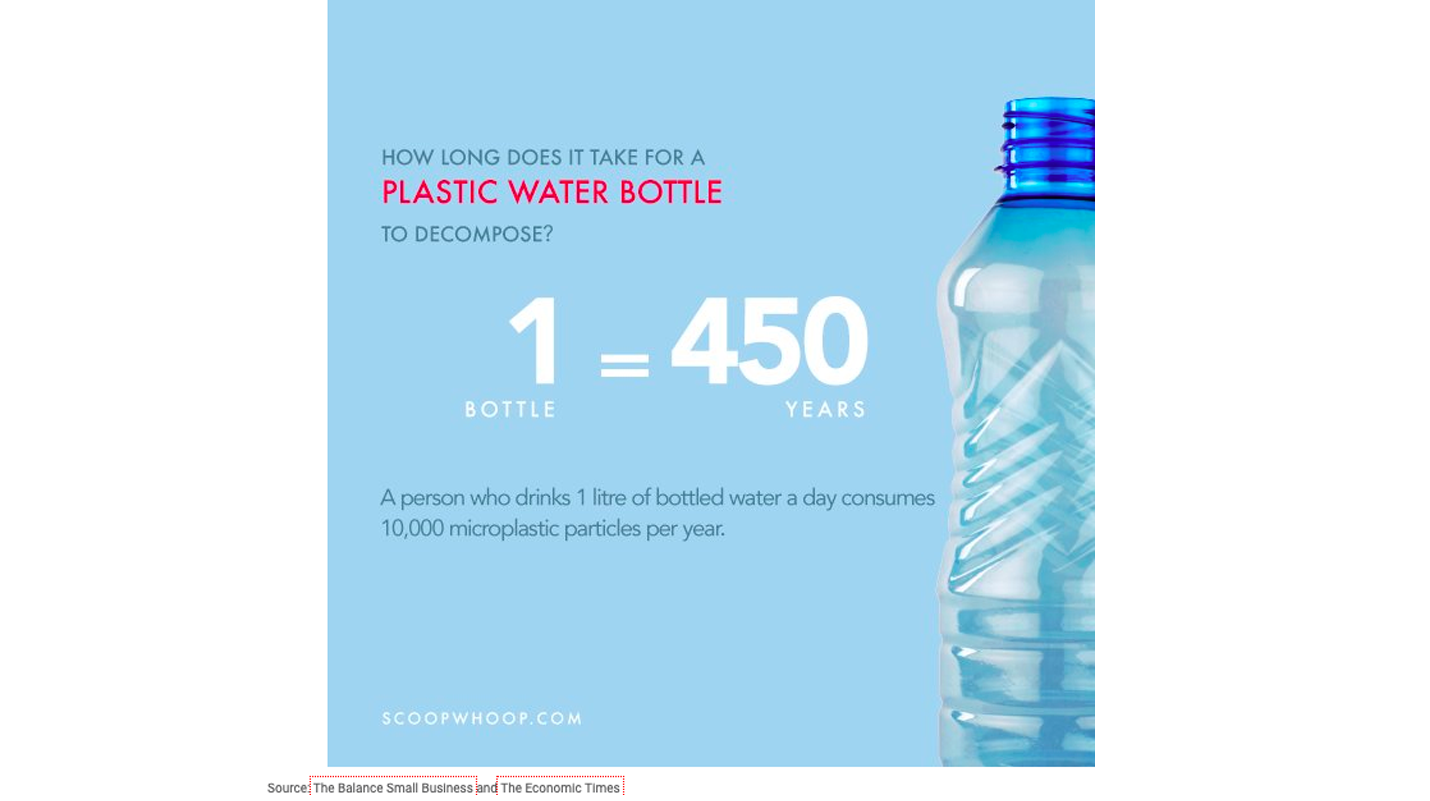
How long does it take a plastic bag to decompose?
So, what about plastic bags, how long do they take to decompose?
Answer: between 10 and 1,000 years.
This is a rather frustrating statistic. If it takes 1,000, that’s concerning. But if it takes only 10 years, that’s not so bad– is it?
Guess again. It all depends on how much ultraviolet radiation a plastic bag gets from the sun. If it’s baking in the sun, the bag could break down a lot sooner (i.e., 10 years) than a plastic bag that’s hidden from the sun (i.e., 1,000 years).
Even if it takes 10 years, this is still concerning. Polyethylene in plastic bags does not biodegrade. It simply becomes brittle, causing the bag to break down into tiny plastic pieces. In other words, there may not be a plastic bag floating in the wind or oceans. Instead, there are now tiny microplastics being scattered around the world.
To fix this, maybe it would be best to go back to paper bags for our shopping needs. The alternatives are endless. You can find more great, simple options here.

How long does it take a plastic straw to decompose?
What was once the most convenient tool is now going through a shift for being one of the most hated plastic products – plastic straws.
It will take approximately 200 years for a plastic straw to decompose. Much longer than the time they have been in modern existence.
So, what can we do? Well, continuing to throw our plastic straws into the garbage would be a step in the opposite direction since they’re not easily recyclable due to their size. For starters, I would suggest alternatives. There are always alternatives, like stainless steel, paper, or biodegradable straws. Better yet, don’t use a straw at all! or just go without a straw. Go cold turkey on the drinking apparatus!
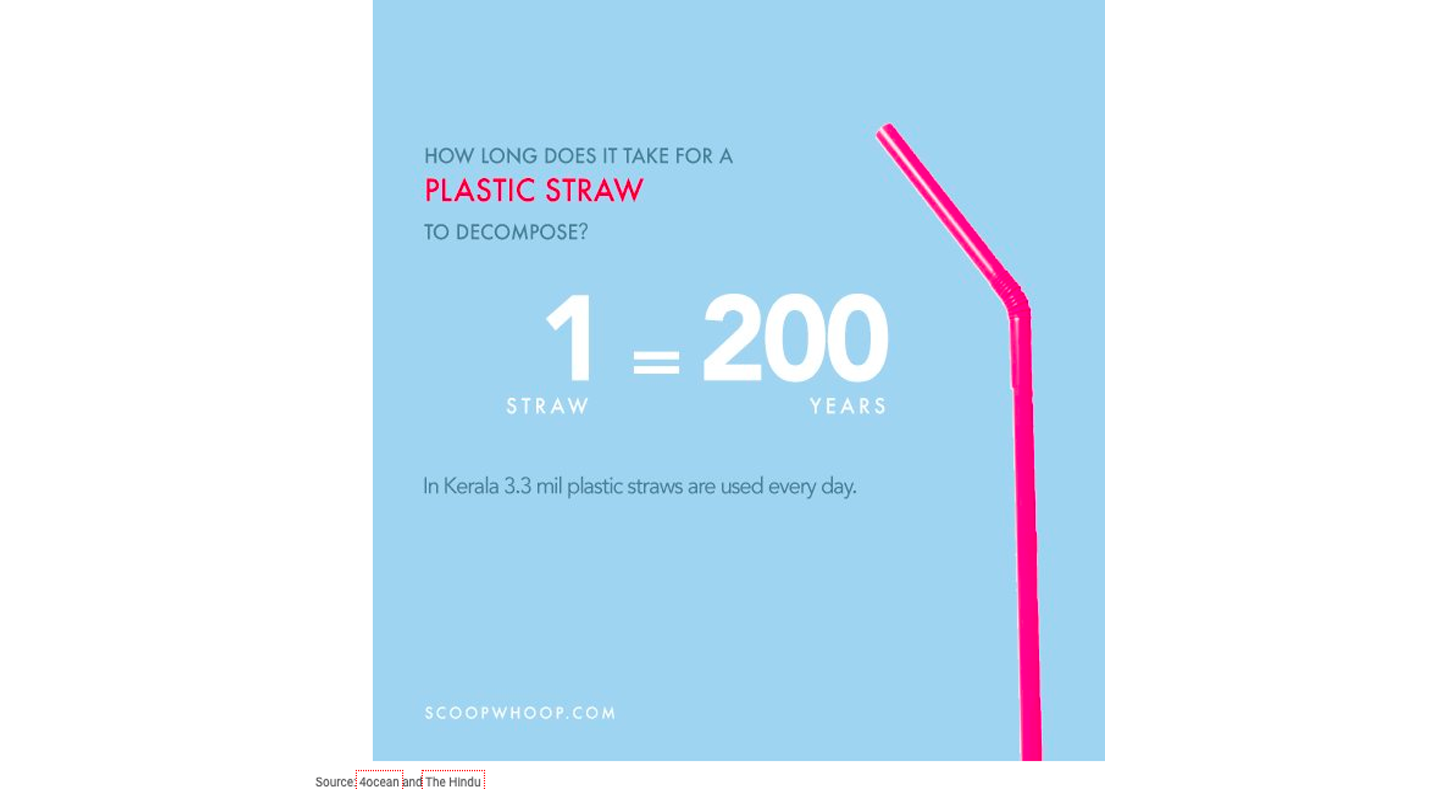
What impact does recyclable plastics having on this situation?
Scattered around this plastic world, 12 million tonnes of plastic waste and materials end up in the oceans each year moving us closer and closer to the plastic world we are trying to escape from. We need to be better.
Right now, we as Canadians recycle only 11% of all plastics with the other 89% being tossed into our landfills, oceans and or being incinerated into harmful fumes. Recyclable plastics can drastically change this statistic by removing all these harsh plastics from the environment and utilizing them to make others. If done correctly, those plastic grocery bags can be made and remade into the same bags or other plastic products instead of spending the next hundred years in a landfill or fixed to some innocent sea creature.
Dark Mode Hockey?
What if the NHL went Dark Mode like your cell phone?
It may sound like sacrilege to die-hard hockey fans, but wouldn’t it be easier for viewers to follow a white puck against black ice than the current standard of a tiny black puck on an ice surface?
A recent survey found a surprising number of Canadians would be willing to watch our national game in a radical new light.
Given the recent run of Dark Mode software releases, which are designed to improve customer experience, the team at Caddle decided to investigate what other Dark Mode experiences might be of interest to Canadians. We decided to start with Canada’s favourite game – hockey.
Our survey received more than 8,000 responses from Canadians of all ages to gauge their receptiveness to watching NHL games in Dark Mode.
Here’s what we learned:
- 28% of overall respondents are interested in NHL Dark Mode, compared to 40% opposed
- 31% of respondents who identified as serious hockey fans – those who watch at least one game per week – would be interested in NHL Dark Mode. This segment of respondents is over-indexed
- Younger Canadians are more open to Dark Mode hockey than older Canadians.
- 36% of Gen Z interested in NHL Dark Mode
- 30% of Millennials interested in NHL Dark Mode
- 26% of Gen X interested in NHL Dark Mode
- 22% of Baby Boomers interested in NHL Dark Mode
- 27% of Silent Generation interested in NHL Dark Mode
“This research may not pave the way to black ice hockey rinks across the country, but what shows very strongly is that Canadians have a huge appetite for new experiences – even when it comes to a game like hockey with very strong traditions,” says Caddle CEO Ransom Hawley.
So what do you think – would you be interested in making the switch to black and white? Let us know your thoughts in this form.
Plastic Straws: Canada’s Plastic Ban Explained
Why Canada is banning plastic straws. Here’s what to use instead
When it comes to plastic straws, Canada is taking action.
On June 10, 2019, Prime Minister Justin Trudeau announced the government’s intention to ban plastic straws, bags and all other single-use plastics by early 2021 in efforts to reduce non-recyclable waste.
The Prime Minister stated that, “Canadians know first-hand the impacts of plastic pollution, and are tired of seeing their beaches, parks, streets and shorelines littered with plastic waste”.
On top of this, several companies in Canada have also pledged to ban plastic straws in their facilities—including coffee chain Starbucks, which will eliminate all plastic straws from its stores worldwide by 2020.
While experts suggest the straws themselves only make up a tiny fraction of plastic in our oceans and coastlines, the plan marks the start of concerted effort to reduce our dependence on single-use plastic.
Here’s what you need to know.
How has Canada responded to Trudeau’s proposed plastic ban?
The response hasn’t been all sunshine and rainbows. And if you’re good at understanding both sides of the story, you might be able to understand why.
From an economic standpoint, this ban has the potential to hurt small businesses. To investigate this potential roadblock, the Canadian Federation of Independent Business has called for an assessment to see how this ban might affect small businesses.
For First Nations groups, this ban also proposes an issue as they rely heavily on plastic water bottles so they can get the fresh water they need.
Why are plastic straws bad for the environment?
Plastic straws negatively impact the planet in two key ways: Since they aren’t biodegradable they build up in oceans, coastlines and landfills. Secondly, the plastic itself releases chemicals into the environment that harms plant and animal life.
You might remember the glory days of plastic straws: sipping on an ice-cold soda on a hot Summer’s day without a care in the world. But what happened after you threw them away? Plastic straws made their way into our landfills and oceans.
All those refreshing sodas and all those straws led to a huge accumulation of plastic. In fact, plastic straws have made the top-ten list of items collected during beach cleanups. Scuba divers have even found great amounts of plastic dwelling under the sea. But, the negative effects of plastic straws impact our land just as much as our oceans. Plastic straws are not biodegradable.
To make matters worse, over time, the straws break into smaller particles, releasing harmful chemicals and toxins that pollute the soil, air and water—harmful to plants, animals and people alike.
Millions of turtles, whales and other marine wildlife die each year from ingesting plastic or being exposed to its harmful toxins.
The problem in Canada
Plastic straws contribute to the problems we face here in Canada and plastic straws are part of that. In total, over 10,000 tonnes of plastics enter the Great Lakes each year.
Of course, that isn’t all straws, but as a country, we use 57 million plastic straw each year. In the past 25 years, nearly 800,000 volunteers have removed over 1.3 million kilograms of trash from across Canada’s shorelines. The most commonly littered items were single-use plastic products
Are plastic straws recyclable?
Unfortunately not. Most of the plastic straws that you will encounter at fast food chains or grocery stores are polypropylene or polyethylene. The problem is that polypropylene is classified as a type 5 plastic—and unfortunately, most recycling facilities do not accept type 5 plastic.
But it isn’t just the type of plastic that causes problems. Let’s say you’ve found out that your local recycling facility does accept type 5 plastic—problem solved, right? Plastic straws are too small and they fall through the conveyor belts, which means they are discarded due to lack of cleanliness and quality of plastic. Also, if the plastic straw is dyed black, it will not be accepted whatsoever because it has reached the end of its life cycle and is no longer a high-quality plastic.
In Canada only about 10 percent of plastic gets recycled, but that percentage is likely to be almost zero for straws.
There’s no winning when it comes to recycling plastic straws.
Doing your part: Alternatives to using plastic straws
Plastic straws have an average usage time of twenty minutes before we discard them – a trivial lifespan for something that will remain on the planet forever. There are plenty of great options to replace plastic straws and ensure that you’re doing your part to combat waste. Some plastic straw alternatives include:
- Paper straws
- Steel or metal straws
- Hard plastic (think twisty, colourful, reusable straws)
- Bamboo straws
- Silicone straws
- No straw (take a sip straight from the glass)
We highly recommend checking out Plastic Alternatives: 10 Easy Options to Start Using Right Now for a more in-depth look at plastic straw alternatives.
It looks like humanity is kicking plastic straws to the curb once and for all. Take the time to explore a viable straw alternative and keep on reducing, reusing and recycling.
Everything you need to know about Mahtay Café & Lounge
Meet the owner of Mahtay Café & Lounge Chris Lowes
If you’re from the Niagara region–St. Catharines in particular– you’ve no doubt been to (or at least heard about) Mahtay Café and Lounge. Located on St. Paul Street, this coffee shop has been in business for about eight years now and there is just something about it that makes you coming back for more (sorry Tim Hortons).
Like ourselves, we often take time out of our busy schedules to walk down the street to grab a cup of coffee from Mahtay. That’s just how it works in St. Catharines culture. Everyone is very tight-knit with the community and looks to support local businesses.
But this trip to the coffee shop was different. We wanted to know more about Mahtay. We had the chance to sit down with the owner of Mahtay, Chris Lowes, over a cup of coffee as the subject matter expert himself discussed everything there is to know about Mahtay and the coffee industry.
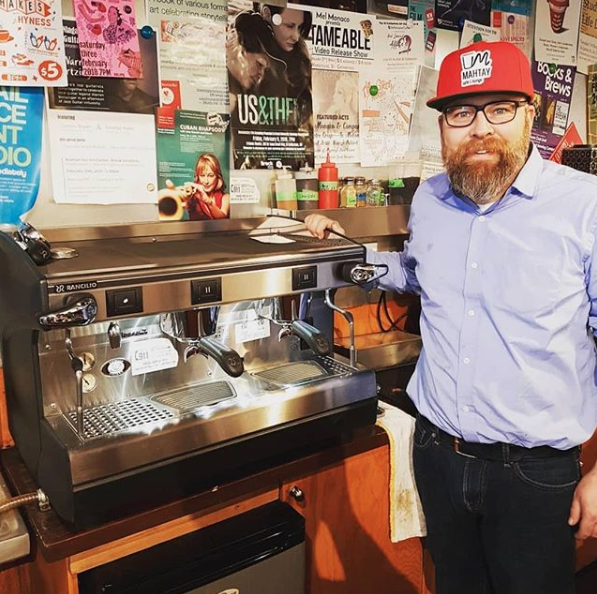
How do you stay current in the industry?
When you’re in the food and restaurant industry you really have to stay current– coffee shops especially. We really pay attention to food trends and staying current with trade shows and industry magazines. People are always interested in what’s new and healthy. So in this particular moment, we’re doing a purple yam latte — an ube (Ouu-bay).
Social issues are also really important to us, so it’s important staying on top of that as well. A lot of that comes from having staff that are savvy. I think this really allows for us to tap into our community.
What is this purple latte you mentioned?
It’s exactly what it sounds like, it’s a purple latte– ube, which is made out of purple yams. It is very popular in Malaysia and has a ton of health benefits. But with this month [September], being a purple month with the Grape and Wine festival, we wanted to tap into the community by doing something creative with that.

What encouraged you to get into the coffee industry?
I come from a construction background, but I always enjoyed the romance style of a cafe. Creative culture always spoke to me and that’s the same environment I wanted to create here.
I’m a very “go-go” kind of person, so the times that I’ve been on vacation have really been the only times when I’ve had the chance to experience cafe life. So that’s why it was always the romance of, “oh remember when went here and hung out at this cafe and people watched?”
So that’s where the inspiration came from. Not so much when I’m at home because I have a wife, kids and a 150-year-old home that demands a lot of attention. So places we experienced all around the world like Brooklyn, the Carolinas and the incredible coffee culture in Europe certainly drew my attention to cafe life.
That’s why we don’t have TV’s in our shop. You can get that someplace else; there are lots of coffee shops that do that really well. But we wanted to create a space where creatives can gather around, talk, eat, and get away from the outside world for a bit.
Is there anything that has encouraged change since you’ve started?
I wouldn’t say that it’s more systematic than what it is symptomatic. When there’s something that needs to be addressed then we’ll do it.
When we first started I would come in on a Sunday and no one would be around, but I told my daughters that if I needed them they would have to jump in. But now that’s totally different. In the fall and winter time, Sundays are our busiest day of the week. So that certainly dictates necessary change.
But on the other hand, we’re always pretty driven so we’re always looking for innovation, new ideas and opportunities.
Recently we bought a coffee trailer which will be our next thing that will allow us to go to events and sell coffee. We’ve been asked to do a lot of corporate events or events at wineries, but not having a mobile unit can be a pain in the neck. So if we have something that is all set with everything you need, all you have to do is pull [the trailer] and drop it off.
From food to coffee, how do you come up with new products?
Everyone here is really bought into what we’re doing. So we’re drawing on our community and our staff to create new things.
They’re always saying, “hey I saw this and we should try that, but what if we did it this way instead?”
Some ideas are more difficult than others but a lot of the time we’ll be open to it an putting our own spin on it.
We tried this one particular drink [ube latte] someplace else so we thought, “hey that’s pretty good why don’t we try that out and make it incorporate something else into it?”. So that’s how the [ube latte] in particular came about.
But demand and always wanting to try and be innovative definitely plays a large role in what we do around here.
How do you look for validation in the products you sell?
That’s a good question, actually.
Customer feedback is always a big one. We have a very chatty staff so that helps us figure out what people like and what they don’t like. So on an anecdotal level that helps us get validation on what products are working and what isn’t.
But of course, sales dictate a lot as well too. If something is still selling strong, we’re of course going to keep it on the menu.
Where does the name Mahtay come from?
Okay, so it’s a phonetic pronunciation of the word “Yerba Mate” (ur-ba mah-tay) which is a South American tea.
When we were first opening up business we really wanted to distinguish ourselves from other coffee shops and Yerba Mate represented what we wanted Mahtay to be about.
[Yerba] Mate is a communal drink that you traditionally put loose leaf in a gord they call a guampa. Then you get a perforated straw called a bombilla. Then you pour hot water in [the gord], you drink it, and then you pass in on to the next person in which they do the same. It keeps getting passed around and often it’s used in a community and the end of the day with family or friends.
That was what we were trying to do with Mahtay. We wanted to connect with the community and we thought this drink really represented that well.
[simple-author-box]
